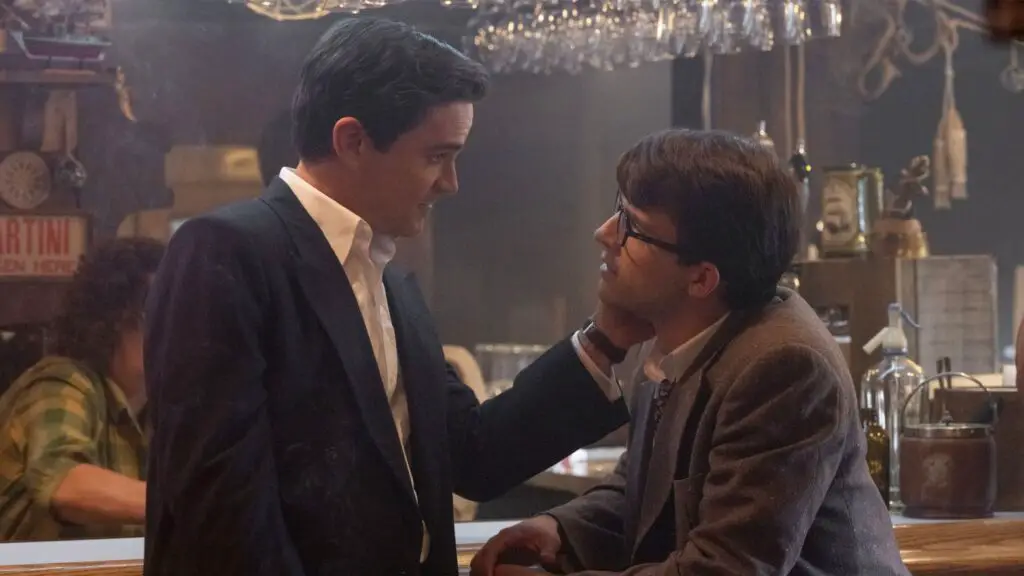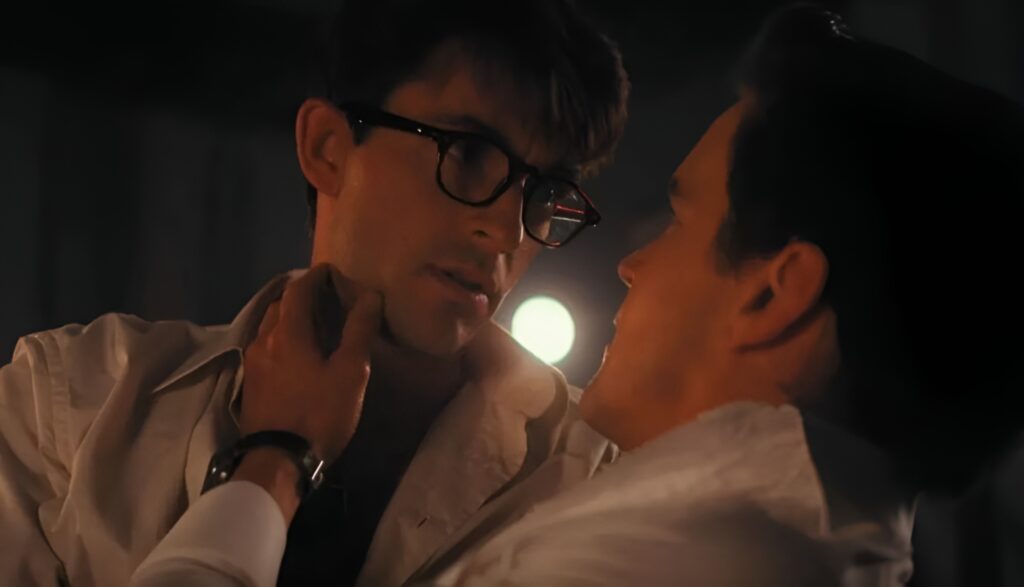In the heart of Showtime’s critically acclaimed series “Fellow Travelers,” lies a musical narrative as profound and complex as the story it accompanies. Paul Leonard-Morgan, the series’ composer, undertakes the intricate task of encapsulating the essence of a decades-spanning forbidden romance set against the backdrop of some of the most tumultuous periods in American history. From the oppressive shadows of McCarthyism in the 1950s to the vibrant yet challenging times of the 1980s, Leonard-Morgan’s score becomes a vital narrator, echoing the internal and external conflicts of the protagonists.
At the series’ onset, in the politically charged atmosphere of the 1950s, Leonard-Morgan’s compositions subtly reflect the unspoken tensions and hidden desires of the main characters, Hawkins Fuller and Timothy Laughlin. The music in these early episodes is carefully restrained, mirroring the societal constraints and personal fears surrounding their clandestine relationship. As the narrative progresses into the 1960s and 1970s, marked by the Vietnam War protests and disco hedonism, the score evolves. Leonard-Morgan introduces a richer, more complex array of sounds, signifying not only the changing times but also the deepening of Hawkins and Timothy’s relationship.
The 1980s bring about the most poignant and challenging era for the couple, with the AIDS crisis casting a long, harrowing shadow over their lives. Leonard-Morgan’s compositions during these episodes are particularly evocative, weaving a tapestry of sorrow, resilience, and enduring love. The music doesn’t just accompany the scenes; it amplifies the emotional depth and the gravity of the era’s social issues.
Leonard-Morgan’s approach to the soundtrack of “Fellow Travelers” is not just about creating period-appropriate music. It’s about crafting a sonic journey that parallels the emotional journey of its characters. His use of specific instruments and motifs to represent different time periods and emotional states creates a layered, immersive experience. This is particularly evident in scenes of intimacy or conflict, where the music bridges the gap between words and emotions, often saying what the characters cannot.
In crafting this score, Leonard-Morgan delves into a diverse musical palette, ranging from classical orchestration to contemporary styles, each chosen to enhance the storytelling. His music serves as a window into the souls of Hawkins and Timothy, offering a unique perspective on their journey. It’s a testament to the power of music in storytelling, particularly in a story that spans such a critical period in history.
The score of “Fellow Travelers” is more than just background music; it’s an integral part of the narrative. Paul Leonard-Morgan’s compositions offer a rare insight into the hearts and minds of the characters, while also encapsulating the essence of an era. Through his music, the series not only tells a story of forbidden love but also paints a vivid portrait of the historical and cultural landscapes in which this love struggled to survive.
Harmonizing History and Emotion: An In-Depth Look at ‘Fellow Travelers’ Soundtrack

The soundtrack of “Fellow Travelers” is not just a collection of melodies; it’s a historical journey, a chronicle of emotions, and a testament to Paul Leonard-Morgan’s mastery as a composer. Each track in the series is meticulously crafted to reflect the zeitgeist of the era it represents while resonating deeply with the personal journey of its characters. This unique blend of historical authenticity and emotional depth sets the soundtrack apart as a critical component of the series’ storytelling.
Leonard-Morgan’s compositions for the 1950s episodes capture the stifling atmosphere of McCarthyism, using subtle, understated melodies that convey the unspoken fears and hidden desires of the protagonists. As the series moves into the 1960s, the music becomes more expressive, mirroring the societal upheaval and the characters’ growing boldness in their relationship. The soundtrack here employs a mix of traditional and contemporary styles, reflecting the era’s turbulent shift in cultural and political landscapes.
The 1970s, with its backdrop of the Vietnam War protests and disco culture, sees Leonard-Morgan infusing his music with a vibrant, yet somber tone. The tracks from this era blend the energetic beats of disco with the solemnity of the war’s impact, creating a complex auditory experience that mirrors the characters’ internal struggles and the societal changes around them.
Perhaps the most impactful era represented in the soundtrack is the 1980s, marked by the AIDS crisis. Leonard-Morgan’s compositions during this period are deeply moving, often infused with a sense of melancholy and resilience. The music not only underscores the tragedy and fear experienced by the characters but also highlights their strength and the enduring nature of their love. It’s in these tracks that Leonard-Morgan’s ability to convey profound emotions through music is most evident.
Throughout the series, Leonard-Morgan utilizes a variety of instruments and styles to create a diverse and richly textured soundtrack. From classical strings to modern synthesizers, each element is chosen to enhance the emotional impact of the scenes. The soundtrack thus becomes a character in its own right, guiding the audience through the series’ narrative arc and deepening their connection with the story.
In conclusion, the soundtrack of “Fellow Travelers” is a masterful blend of historical accuracy and emotional depth. Paul Leonard-Morgan’s compositions not only set the tone for the series but also deepen the audience’s understanding of the characters and the times they lived in. His work on the series is a shining example of how music can elevate storytelling, making “Fellow Travelers” a memorable experience for its viewers.


